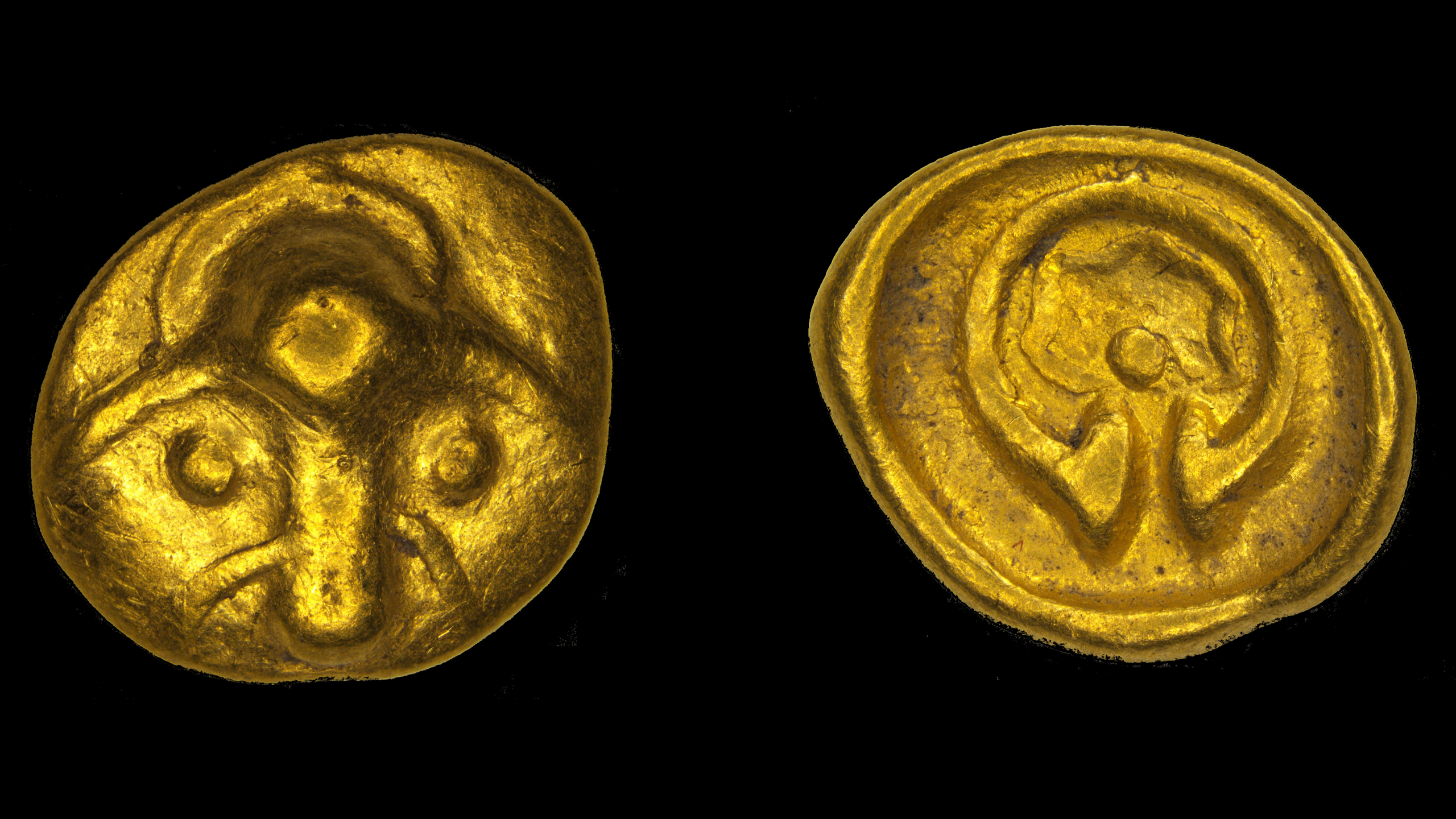A certified metal detectorist who was scanning in a field near Leipzig, Germany, discovered the oldest coin ever found in the state of Saxony. The 2,200-year-old gold coin, known as a “rainbow cup,” is a rare example of imported Celtic currency.
“The gold coin is a tangible piece of our history and provides new insights into trade with the Celts,” Saxony’s state minister, Barbara Klepsch, said in a translated statement Oct. 27.
Celtic rainbow cups — named after the German term “regenbogenschüsselchen,” which translates to “tiny rainbow finger bowl” — were named for their curved shape and for the superstition that treasure could be found where a rainbow touched the ground, according to the statement. They were created by the ancient Celts, fierce warrior tribes who lived in mainland Europe and later sacked Rome.
The front of the Gundorf Rainbow Cup depicts the stylized head of a stag or similar animal, while the back shows an open neck ring with thickened ends (possibly a Celtic torc or torque), a star with rounded corners, and a sphere.
Saxony state archaeologist Regina Smolnik said in the statement that the 2-gram (0.7 ounce) coin — about the weight of a U.S. dime — was in “almost mint condition” and unlikely to have been in circulation as currency. “Rather, it was likely a status symbol or a store of value belonging to an upper class person with trade relations with the Celts,” Smolnik said.
Several rainbow cups have been recovered recently in Germany, painting a picture of trade relations between the Celts and Germanic-speaking people prior to the Roman invasion.
In 2021, archaeologists discovered a stash of 41 plain rainbow cups in the northeastern German state of Brandenburg. These coins, which were minted in the first century B.C., were also assumed to have been procured through trade, as the Celts didn’t live in Brandenburg. And in 2023, archaeologists in the German state of Bavaria announced the discovery of a single rainbow cup with a rare four-pointed star decoration on the inside, possibly lost by someone traveling along an ancient road nearby.
Although the Gundorf Rainbow Cup is only a single coin, its discovery in Saxony, along with other examples of the coin elsewhere in Germany, has provided “further evidence of regular contact and connections” between the Celts and the people living in Saxony more than two millennia ago, according to Smolnik.
